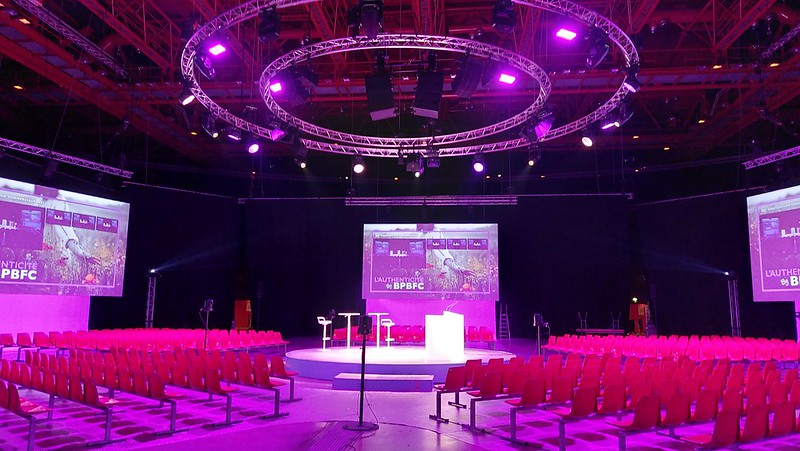Dushow Spain is now Novelty Spain
How to measure your event ROI, and learning to optimize it
Measuring event ROI is not easy. After much time and effort spent organizing your corporate event, the big day comes and goes. Now what? How can you measure the outcomes?
The room was packed. Over 10,000 photos have been posted on Instagram. 300 tweets on Twitter. The sponsors are congratulating you on a job well done. But, how can you turn all these data into information relevant for decision-making? It’s time to learn to calculate event ROI.
What is event ROI and how is it calculated?
Let’s begin with a few definitions. Return on Investment (ROI) tells you the percentage of return on the investment made to hold your event.
It’s easy enough to calculate: (Revenue-investment) / investment x 100 = ROI
Sometimes, applying this formula to measure an event’s impact is difficult, as many of the profits obtained go beyond those of the immediate economic variety. To do it correctly, let’s go back to the beginning. Why did you decide to hold your event in the first place?
If your purpose was to launch a new product onto the market, then the data to measure won’t be the same as if what you sought was brand recognition. To clearly measure the extent of goal achievement, start by defining the KPI’s relevant to your event.
Event ROI: Defining your event’s KPI’s
An event is made up of an entire array of intangible and emotional aspects that may be hard to measure when you want to calculate your event ROI.
Precisely for this reason, it is essential to define from the beginning your Key Performance Indicators (KPI), in other words, the parameters you consider important and that can be measured.
Each of them must be based on the fulfilment of your goals, and for them to be reliable, their characteristics should be SMART (Specific, Measurable, Attainable, Relevant and Timely).
For example, if the goal of your event is to generate brand recognition, two highly significant KPI’s might be an increase in social media followers and website traffic.
Here are more examples of KPI’s used to measure event ROI:
-
Direct economic revenue
-
Sponsorships
-
Ticket sales (in-person and by streaming)
-
Product sales
-
Merchandising sales
-
-
Indirect profits
-
Event registrations
-
Reactions on social media (likes, mentions, hash-tags, followers, etc.)
-
Mentions in the media (number of mentions and economic value)
-
New subscribers
-
Website traffic
-
Google searches (on the brand, speakers, the event, etc.)
-
Satisfaction surveys taken among attendees, sponsors, influencers, media representatives, etc.
-
It is important to go beyond the most obvious indicators. Find the small pieces of information that have the potential to redefine your next campaign.
With the rise of virtual events, it is much easier and immediate to measure KPI’s that will help you determine the success of your event. Thanks to the technologies developed with this type of events, we are able to access indicators such as:
- Event registration channel (e-mail, website, social media campaign, paid social, etc.)
- Simultaneous connections
- Accrued connections by the end of the event
- Average connection time
- Votes and exact answers to questions asked
- Subsequent views and downloads of the event
- Clicks on the digital invitation
- etc.
How to measure event ROI and optimize its measurement
Great. You’ve defined your event goals and chosen the most important KPI’s. Now there are three ways to gather that information:
Annual measurement of ROI
It is not ideal, but you can often get information from many sources, and you have no other choice than to gather these data manually.
Automation of ROI measurement
The ideal scenario. There are platforms like Hubspot, Eventtia, Google Data Studio, Meltwater and Welovroi, that empower you to centralize and measure the information with a high degree of accuracy. This way, the data gathered will be even more valuable, such as:
- Determining the presentations that got the best results.
- What marketing actions attracted the most spectators.
- When audience attention declined.
Creating an app to measure the event ROI
Another option is to develop a low-cost app to measure the ROI of your event. This enables you to interact with spectators and accurately measure the parameters that would otherwise be very difficult such as:
- Instant reactions
- Mass interaction with questions
- Votes, etc.
Virtual event and Hybrid event ROI
Organizing events through technology used to hold virtual and hybrid events is probably the most effective way to measure your event ROI.
Over the past year, many events have only been possible thanks to digitalization. But what you may not know is that an on-line event offers many more possibilities for data compilation in terms of measuring and analysis.
With virtual events, it’s possible to measure attendance, but also the interaction and participation. This is one of the factors that influences most when generating engagement with your attendees, keeping them active and in a constantly dynamic setting.
This enables you to reach conclusions such as:
- Number of attendees per session (passive and active, if they have interacted)
- Number of attendees highly committed to the brand
- Number and type of actions taken (questions answered, purchases, content downloads during streaming, etc.).
These are the metrics that can help a great deal when rating the potential of your audience, and preparing personalized actions in the post-event phase.
Why is it important to measure your event ROI?
If you don’t measure it, you can’t manage it. Therefore, if you want your event to be successful even after the applause has died down, you need tools that give you reliable data to defend and optimize the outcomes of your actions. Event ROI empowers you to do that.
Among other advantages, calculating your event ROI lets you:
- Improve your planning and save time in the future.
- Attribute proper value to the efforts behind organizing an event.
- Optimize the budget of your next event.
- Offer tools to sponsors to justify investment in their companies.
- Create sales tools for the next event.
- Build communication activities to attract more followers and customers.
- Show authority on the market.
If you are aware of any other advantages that event ROI can bring, we’d love to hear from you in the Comments section.
This article was first published in Novelty Spain, you can read the original Spanish version here.





